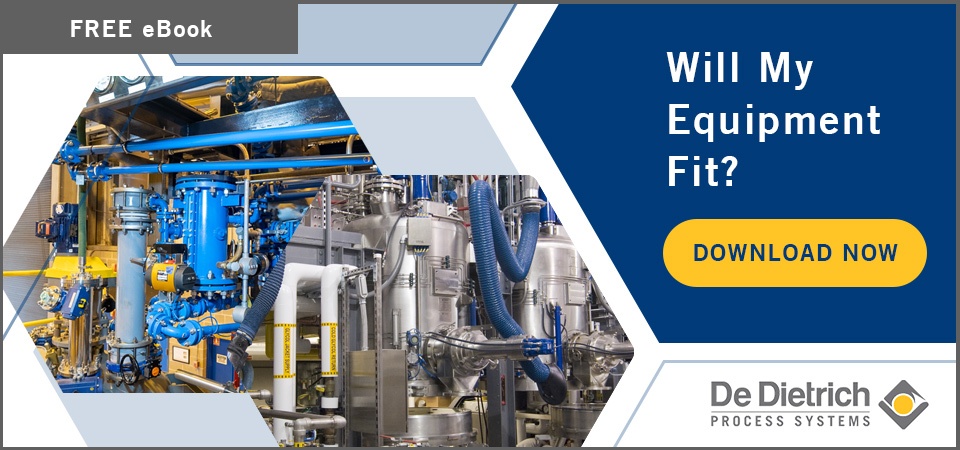Addressing Height Requirements
Jessica Stryjewski, Process Engineer at DDPS, discusses the importance of assessing height requirements before purchasing new equipment. Watch the video or read the transcript below to learn more.
When are height requirements important to consider?
Height requirements are an important consideration for any kind of customer system that has either spatial or budgetary restrictions. That's pretty much a catch-all for most customer systems.
A lot of customers are trying to retrofit into an older building or a given space and they don't have either an infinite amount of space or an infinite amount of budget to work with. In some of these older spaces, with equipment restrictions or height restrictions, it's kind of like playing Tetris, trying to fit everything in there.
What should be considered when addressing height requirements?
The physics of how liquids and vapors flow through a system are going to be one of the factors that can affect height requirements.
If you have, for example, a batch reactor with a condenser overhead, you can discuss things like: Can the condenser be vertical or flipped on its side? If it is flipped on the horizontal, do you have enough pitch allowance in this building for the condenser to be able to drain the liquid down into a receiver?
If you're also dealing with an example like phase separation, if you have a distillation column, columns can be really high, and depending on the type of purity you want to get from this product, it's going to affect the number of steps and trays that you have in your distillation column. The height of a column can be a really important factor to consider.
Something else that maybe we don't think about when we're focused more on the process is: What is the lifetime of this equipment?
The equipment has to get installed and taken out for maintenance at times and also accessed for maintenance while in place. So have you taken into account the amount of height that you need and space that you need around this equipment in order for a person to properly get in and perform maintenance or for any maintenance equipment you might need to get involved?
Have given yourself the headspace for that?
Finally, it can't be emphasized enough that process requirements are number one. The customer needs to assess what their process is before they start to do equipment selection and figure out what their spatial and height requirements are.
What is the process for addressing all of these factors?
With so many factors to consider, it's critical for a customer to put together a process flow diagram before making any purchase of equipment. If there's not an understanding of what the process actually needs to do, then it's difficult to get a grip on how much space the equipment needs to be installed.
Planning ahead of time can save a lot of headaches down the line for managers, operators, and maintenance staff. You have to make sure that there's enough room for both the equipment and the people that are meant to be running it.
It might be beneficial to certain customers in these cases to get an engineering firm to consult with them about spatial requirements and that's also something that DDPS offers with our preliminary engineering services.
For additional information on this subject, download our new whitepaper, "Will My Equipment Fit?: Preliminary Space Evaluations for Chemical Process Systems".
